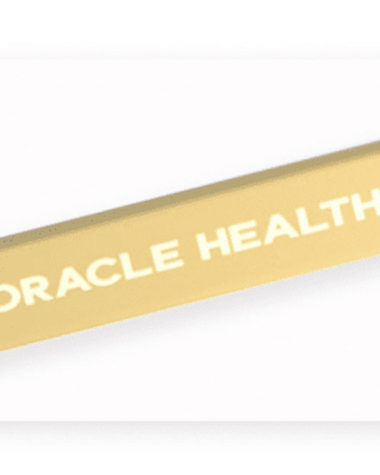LifeVantage Corporation (NASDAQ:LFVN) is a health and wellness company headquartered in Lehi, Utah, best known for its development and distribution of dietary supplements, skincare, and wellness products. Founded in 2003, the company initially gained recognition with the launch of Protandim, a dietary supplement marketed as an antioxidant therapy designed to reduce oxidative stress. Over time, LifeVantage expanded its portfolio to include a range of products targeting cellular health, energy, skin rejuvenation, and weight management. The company operates through a multi-level marketing business model, leveraging a global network of independent distributors who promote and sell its products directly to consumers.
The company’s early years were marked by strong consumer interest in Protandim, which was highlighted on national television and quickly became LifeVantage’s flagship product. As the business grew, LifeVantage capitalized on this momentum to broaden its product lineup under different brand categories, including wellness, fitness, and personal care. This diversification was designed to reduce reliance on a single supplement and appeal to a wider demographic interested in preventive health and lifestyle improvement.
LifeVantage has steadily expanded its global footprint, with operations spanning North America, Europe, Asia, and other international markets. Its distributor-driven model has allowed the company to scale internationally without building costly retail infrastructures. Instead, it relies on independent sales representatives to generate revenue while also recruiting additional members into the distribution network. This structure has enabled the company to enter new markets quickly but has also exposed it to scrutiny due to the inherent risks and criticisms associated with multi-level marketing organizations.
Over the years, the company has sought to enhance its credibility by investing in clinical studies and scientific research to support its product claims. Despite facing regulatory challenges and controversies around marketing practices, LifeVantage has maintained a loyal distributor and consumer base. Its long-standing emphasis on nutrigenomics, the study of how nutrition interacts with human genes, has been a central theme in its branding, setting it apart from competitors in the supplement industry.
Today, LifeVantage is a publicly traded company listed on the NASDAQ under the ticker LFVN, with a market capitalization that reflects its position as a niche player in the health and wellness space. While relatively small compared to major supplement conglomerates, it has established itself as a recognizable brand with a network-driven sales model and a strong presence in the antioxidant and nutrigenomics segments of the market. The company continues to evolve by introducing new formulations, adapting to changing consumer preferences, and exploring opportunities in emerging wellness trends.
LifeVantage Faces Institutional Pressure Amid Ownership Risks
LifeVantage Corporation (NASDAQ: LFVN) has recently drawn attention for the performance of its stock, but not for the right reasons. Institutional investors, who collectively own more than half of the company’s shares, suffered a 15% loss last week as the stock dropped sharply. While longer-term shareholders can still point to a 48% one-year return, the heavy decline serves as a reminder that LifeVantage remains highly sensitive to trading decisions by large investors. With just 10 major shareholders controlling over 50% of the company, LifeVantage’s ownership concentration creates both volatility and vulnerability—two factors that raise concerns about long-term stability.
Institutional Ownership: A Double-Edged Sword
Institutions currently hold about 52% of LifeVantage’s outstanding shares, a level of ownership that on the surface may appear to validate credibility. Yet this concentration carries significant downside risk. If just a few institutions decide to exit their positions, the stock could face another sharp downturn, as was seen with the recent 15% sell-off. Hedge funds, which own around 13% of the company, further complicate matters, as their strategies often focus on short-term catalysts rather than sustainable long-term growth. While institutional backing can create liquidity and visibility, in LifeVantage’s case it has introduced fragility, where a small number of influential stakeholders dictate the fate of the stock price.

CHECK THIS OUT: Exact Sciences (EXAS) Just Made Cancer Detection 100x Easier! and Soleno Therapeutics (SLNO): The Biotech Company That Could Make You Rich.
Insider Selling Undermines Confidence
Adding to bearish sentiment is the fact that insiders, who collectively hold about 18% of LifeVantage, have been selling shares recently. Insider selling is often viewed as a red flag by investors because it may signal that those closest to the company see limited upside or are hedging against future declines. CEO Steven Fife owns approximately 4.9% of shares, but ownership alignment has been overshadowed by insider disposals. While insiders maintain a $31 million stake in the company, the optics of selling into market weakness amplify concerns about the true confidence management has in its own business trajectory.
The General Public Holds Limited Influence
The general public owns roughly 16% of LifeVantage stock, a sizeable percentage but not enough to shift corporate policy if their views differ from those of larger institutional holders. This leaves individual investors exposed to decisions made by hedge funds, asset managers, and company insiders. For retail shareholders, this dynamic creates the risk of being caught in the middle of rapid shifts in sentiment or forced selling by larger entities, further eroding confidence in the fairness of the ownership structure.
Concentration Risks Heighten Volatility
LifeVantage’s ownership breakdown reveals another troubling fact: the top 10 shareholders control over half of the share register. While concentrated ownership can sometimes align interests and streamline decision-making, in this case it exposes the company to abrupt swings in sentiment if even one or two major investors shift their positions. With a market capitalization of just $165 million, liquidity is relatively thin, meaning that large block trades can disproportionately impact the stock’s trajectory. This lack of diversification in ownership makes LifeVantage particularly risky compared to peers with broader, more stable shareholder bases.
Business Model and Profitability Challenges Remain
Beyond ownership issues, LifeVantage’s fundamentals add fuel to the bearish case. Despite recent top-line growth, the company continues to face questions about its multi-level marketing structure and its reliance on distributor recruitment for sales. These weaknesses raise doubts about the sustainability of growth and its ability to scale effectively. Margins remain pressured, and the reliance on constant product promotion has made it difficult for LifeVantage to translate revenue expansion into durable profitability.
Short-Term Returns Mask Long-Term Risks
It is true that LifeVantage delivered a 48% return over the past year, but such gains are misleading when weighed against the risks. The stock has already shown the capacity for steep losses, and with ownership so heavily concentrated, further declines could happen abruptly. For institutional investors, last week’s 15% loss was a painful reminder that LifeVantage’s performance is not insulated from volatility. For retail investors, the danger lies in being swept up in a cycle of institutional exits and insider selling, leaving them holding shares that may struggle to maintain value.
Final Outlook: Fragile Gains in a Risk-Heavy Structure
LifeVantage may appear attractive to some investors due to its recent annual gains and heavy institutional backing, but the risks embedded in its ownership structure and business model suggest otherwise. The dominance of institutions and hedge funds, recent insider selling, and the lack of influence from the general public create an uneven playing field where volatility is the rule, not the exception. Combined with ongoing profitability concerns and questions surrounding its multi-level marketing approach, LifeVantage represents a fragile investment proposition.
For investors evaluating LifeVantage, the bearish case highlights a company that may deliver short-term rallies but struggles to inspire confidence in its long-term stability. Without structural changes in ownership, improved profitability, and stronger alignment from insiders, the risks outweigh the potential rewards.
READ ALSO: Johnson & Johnson (JNJ) can be the Next Trillion-Dollar Stock and Boston Scientific (BSX) Just Signed a $45M Deal—Here’s What It Means for Investors.








